Exhibit / August 07, 2019
Object Name: Havoc: Super Agent doll
Maker and Year: Model Toys Ltd., 1974-1975
Object Type: Doll
Image Source: Havocdoll, Jaselles Daisy Passion
Description: Amy Mugglestone
The ’70s was a decade of action figures. In 1972, the Mego Corporation bought toy manufacturing rights for both Marvel and DC comics, along with several popular TV and movie franchises, and two years later brought forth a cornucopia of “fully posable” figures (8-inch tall dolls, really), including lines such as World’s Greatest Super Heroes, Planet of the Apes, and Star Trek, plus many more in later years. These joined ’60s veteran G.I. Joe, from Hasbro (sold by Pallitoy as Action Man in the UK), to make the toy box a place of adventure and peril.
Perhaps inevitably, advertising for action figures was largely aimed at boys. Certainly most of the figures themselves were male, with female characters generally representing lesser characters or sidekicks. Mego had a Wonder Woman figure, and if you waited until the end of the decade you could get a Princess Leia, but for the most part, if you were a girl in the market for an eight-inch proxy to roleplay the destruction of your enemies, you either had to play a male character or have your Barbie (or her moon-faced British counterpart Sindy) outclass a rival in the wardrobe department, which is hardly visceral enough to satisfy a child.
So when Havoc: Super Agent parachuted into the British and Dutch toy markets in 1974—complete with motorbike, Tommy Gun, and black-belt in an undisclosed martial art—she was something of an oddity. She had the body of a fashion doll, sharing a mold with Mary Quant’s doll Daisy, released the previous year by the same toy company, the Scottish-based Model Toys. Daisy, named after the floral logo of Quant’s fashion label, was the ultimate style icon, with a new catalog of clothes released every year just for her, by the mother of the miniskirt herself. Quant’s links to Havoc herself are less clear, though she does appear to have released a perfume called Havoc the same year as the doll, and has been photographed with both Havoc and Daisy.
Despite her glamorous pedigree, Havoc’s backstory is pure action figure. Posing as a newspaper reporter, she travels the world outsmarting and beating the crap out of international criminals. The doll itself was sold wearing a utilitarian jumpsuit (of which there is a rare, sought-after green version, if you’re into that sort of thing), with Adventure Packs and Survival Packs sold separately, both featuring unique comic strips about one of Havoc’s perilous adventures. Her accessories included a motorbike, parachute, guns, a harpoon, a tent for surviving in the wild, and an octopus and snake that both attack her in different stories. Clearly, Havoc was not just a pretty face.
Her adventures are brought to life with artwork by John M. Burns, who cut his teeth on girls’ magazines School Friend, Diana, and Lady Penelope in the ’60s, going on to illustrate TV show tie-ins, including The Bionic Woman and Space:1999 for Look-in magazine in the ‘70s, and whose recent work includes art for 2000 AD and Judge Dredd Megazine. Burns produces well-balanced and dynamic panels full of roaring motorbike wheels and action shots of Havoc sliding down banisters or punching villains in the face.
In fact, Britain already had a long history of spy stories for girls, which, along with tales about girls in the French Resistance, ran parallel to the war stories being marketed to boys. The girls in these stories were often surprisingly resourceful and brave, particularly in comparison to their female counterparts in adult spy fiction, who tended to be more decorative. Nevertheless, girl spies were almost always subordinate to a male character, who had to be temporarily incapacitated due to a heroic injury to allow our girl to take center stage.
These stories do have unfortunate roots in early 20th century propaganda tales about the British Empire, where the emphasis shifted from making men seem brave in comparison to women to making British people seem superior to, and thus necessary to the well-being of, “the native.” In this context, the resourceful Britishwoman was considered vital as a mother figure and teacher to the “good native,” who could nevertheless protect her virtue from the bestial urges of the “bad native” if her husband happened to be off in the jungle wrestling crocodiles.
After the Second World War, adventure stories for both boys and girls naturally moved from the jungles of Africa to the battlefields of Europe, and wartime spy stories evolved into generic spy stories, often involving imaginary nations or unaffiliated international crime syndicates like Havoc’s nemesis S.M.O.G.G. (Spying, Murder, Outrage and Gold-Grabbing) as memories of the war faded. But even with the shift away from overtly paternalistic colonialism, as our girl spy overcame foreign enemies but remained subservient to British men, it was impossible to tell if her victories were celebrations of female empowerment or a kind of jingoistic boast—that “even” our women could outwit foreigners.
With Havoc there is no such ambiguity. She is nobody’s sidekick. Male characters entrust her with dangerous missions, and congratulate her in awe when she saves the day. She jumps out of airplanes, defuses a mine, does battle with a radioactive spider, takes out a sniper from across a crowded concert hall, and frequently rescues male characters from peril. Like all girl spies, she does her share of listening at doors too, but when the inevitable snapping twig sends a henchman running in her direction, we are simply told that “he was no match for Havoc,” and she knocks that fucker out. It’s glorious.
Sadly, it seems that Havoc was just too cool for the ‘70s child, and her run was short-lived. Still, a good spy knows how to improvise, and it seems that Havoc found a new life undercover in the US. Several of her Adventure Packs were bought by American company Horsman in 1976 and rebranded as Angie Dickinson’s character from NBC’s Police Woman. After that, the trail goes cold.
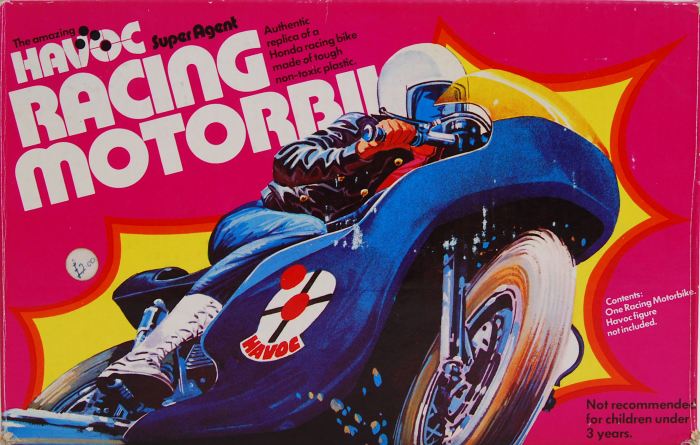
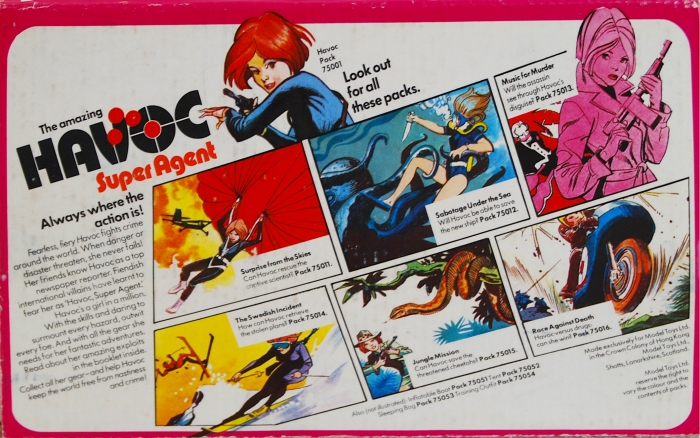
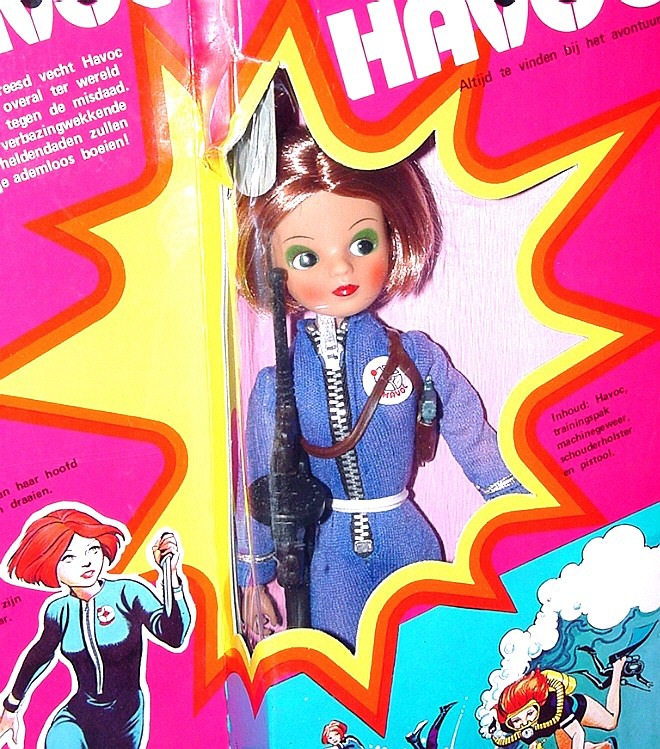
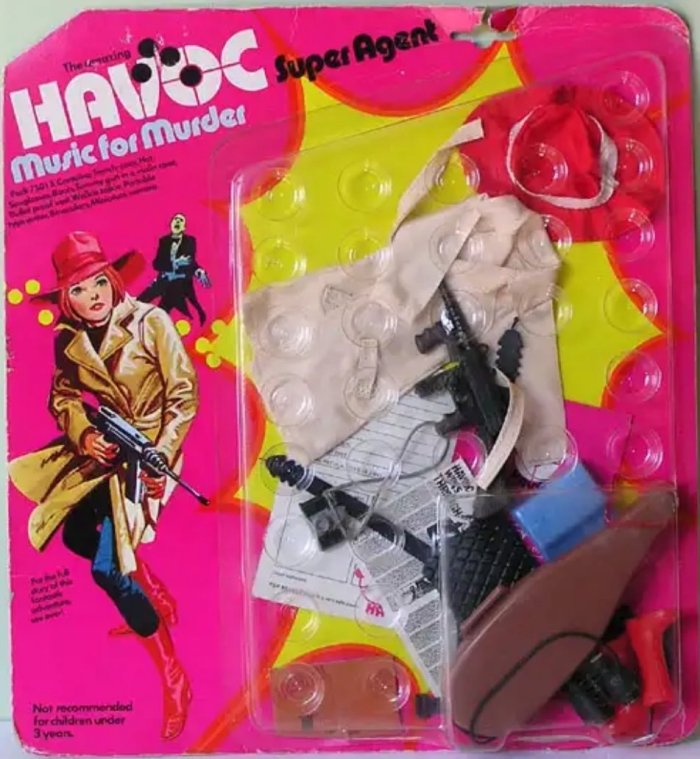
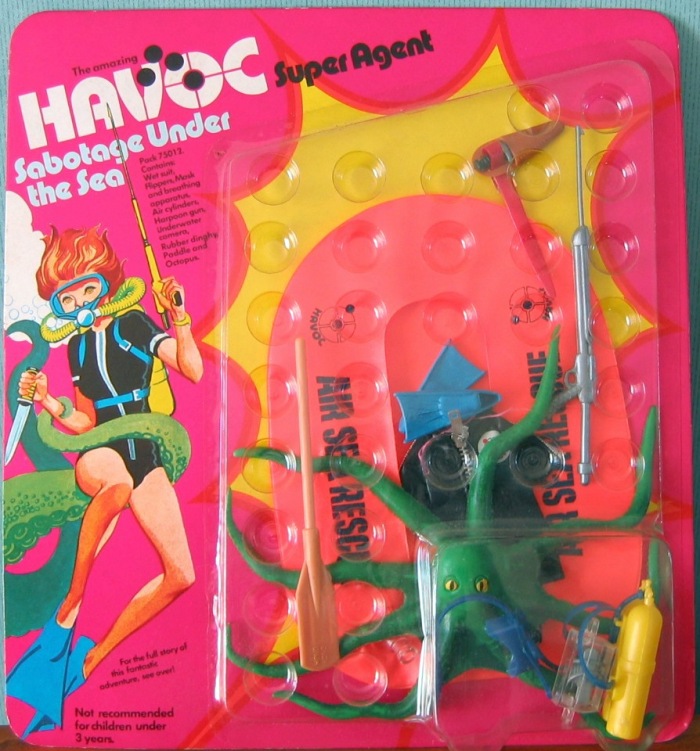
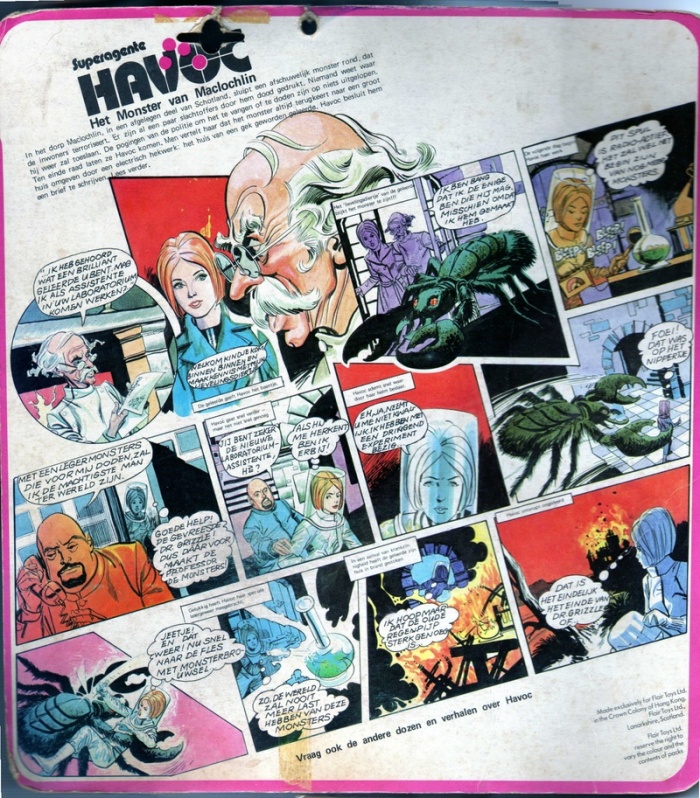
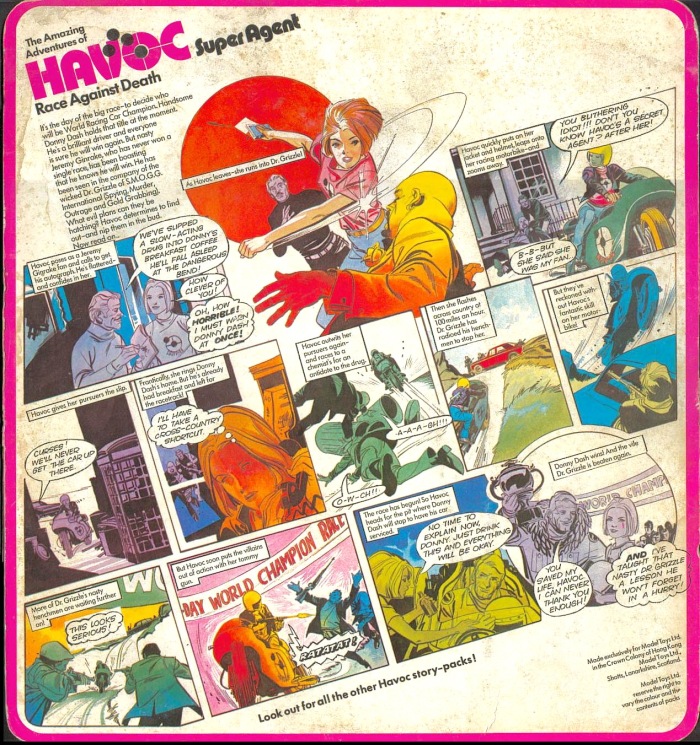
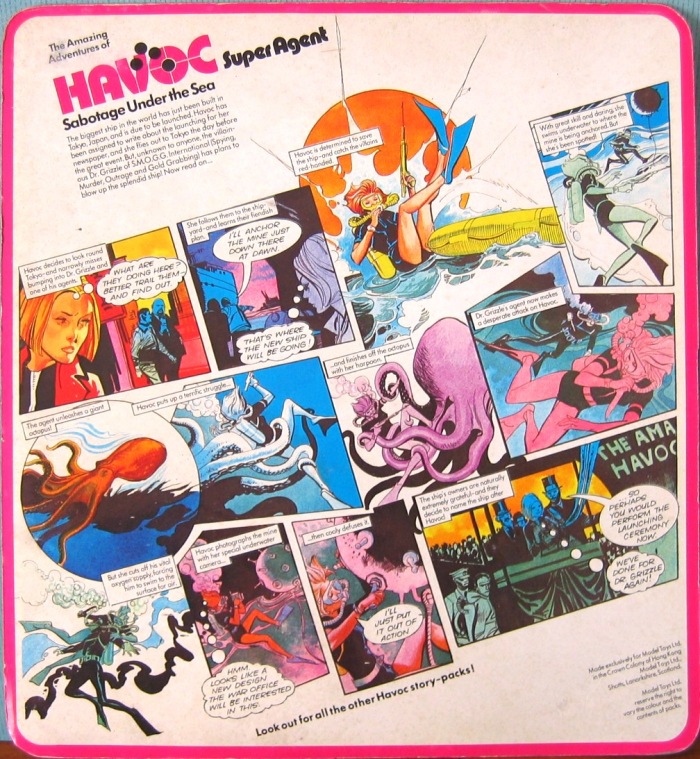



Pingback: Mutating Empire: Britains’ ‘Space’ Toys
Well Havoc may have been short lived as a doll- but she had an enduring impact on me after receiving havoc for Christmas as an 8 year old in 1974!